
Machu Picchu, Cruise around Cape Horn, and Iguassu Falls
Mike and Judy Henderson
January 31 to March 1, 2017
I'm going to leave the map at the beginning of each page to help you visualize where we are.

+++++++++++++++++++++++++++++++++++++++++++
2/15/2017 (Wednesday) Today is an "at sea" day. The weather is getting colder as we proceed south. We're in the Chilean fiord area now which was covered with ice in the last Ice Age. Enormous glaciers carved the fiords, leaving many islands and channels. We're not where the blue dot indicates - We're near the point of the arrow.

There are still a few glaciers, and we began our day today by going to the Amalia glacier. The glacier is where the arrow points in this map.

The terrain here is stunning. Here's a picture I took as we were heading up the channel towards the glacier.

Here's a shot of the glacier.

And a closer shot

Here we are at the glacier.

Later, we played a "bowling" game, using a nerf bowling ball.

And Judy won a prize.
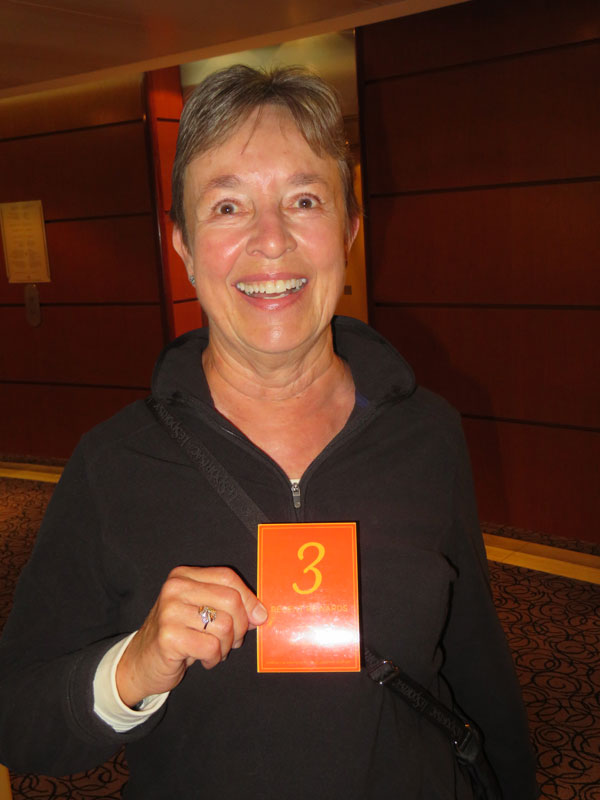
We're sailing through some beautiful country. Pictures just don't convey what it's really like, but here are a couple of shots.


Later in the day we tried to join a croquet game, but it was really too cold to enjoy it.

We passed the wreck of an older freighter. It was the Santa Leonor, which had started life as the USS Riverside, but was sold after the war. She was wrecked in 1968.

We had a very dramatic sunset, a sunset over Patagonia.

+++++++++++++++++++++++++++++++++++++++++++++++++
2/16/2017 (Thursday) We arrived in Punta Arenas early this morning, and we were up early to join a tour. We got to see the sun rise over the Strait of Magellan.
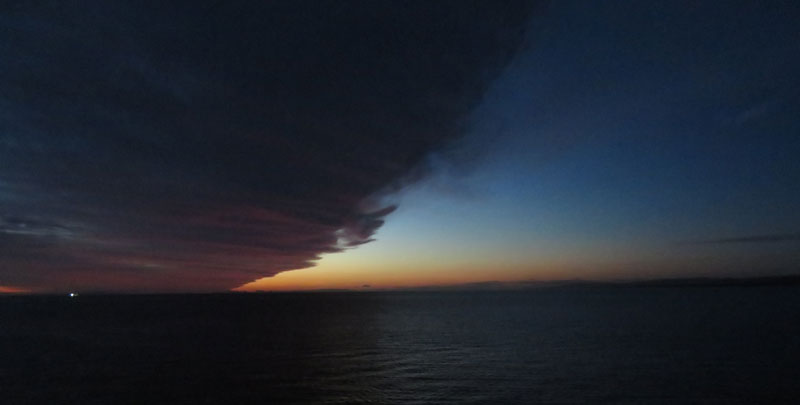
It gradually got lighter.
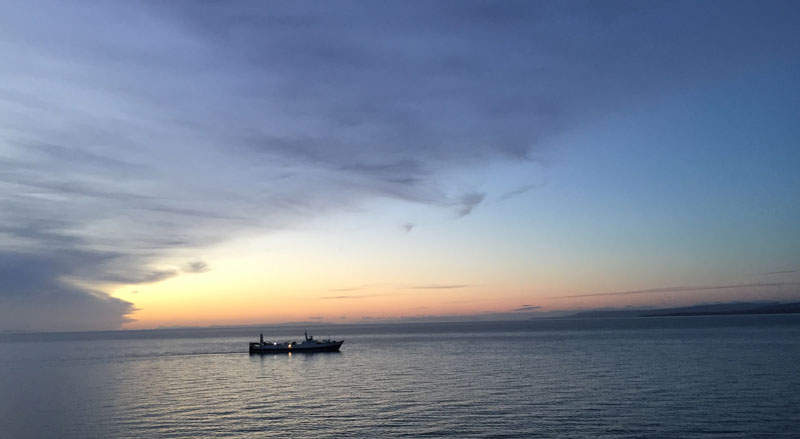
And finally full sun-up.

Here's Punta Arenas, which means sandy point.

Our tour today is a visit to a sheep ranch. We boarded the bus for a hour and a half drive to the ranch. Along the way, we saw some wildlife. In addition to sheep in this next picture, there are flightless birds called Rheas, related to the Australian emu. They are wild, even though they are often with sheep.
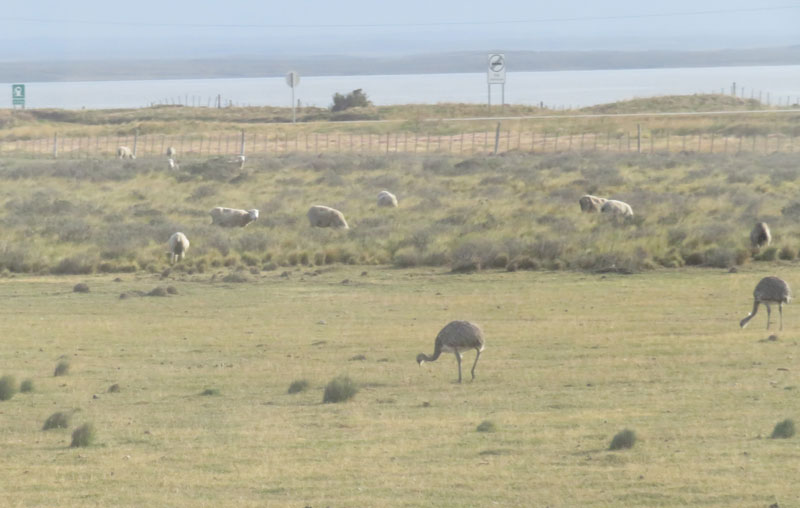

The next bird we saw was the Southern Crested Caracara. Our guide said that they mostly feed on carrion, although they are capable of taking small animals.

We also saw a red fox stalking a lamb but I was unable to get a picture of it. Then, alongside the road were four ferrets. The picture isn't very clear because they took off as we approached.

Here's a pair of Upland Geese. Upland Geese mate for life.

We eventually reached the ranch, Estancia Olga Teresa, and they had coffee waiting for us.
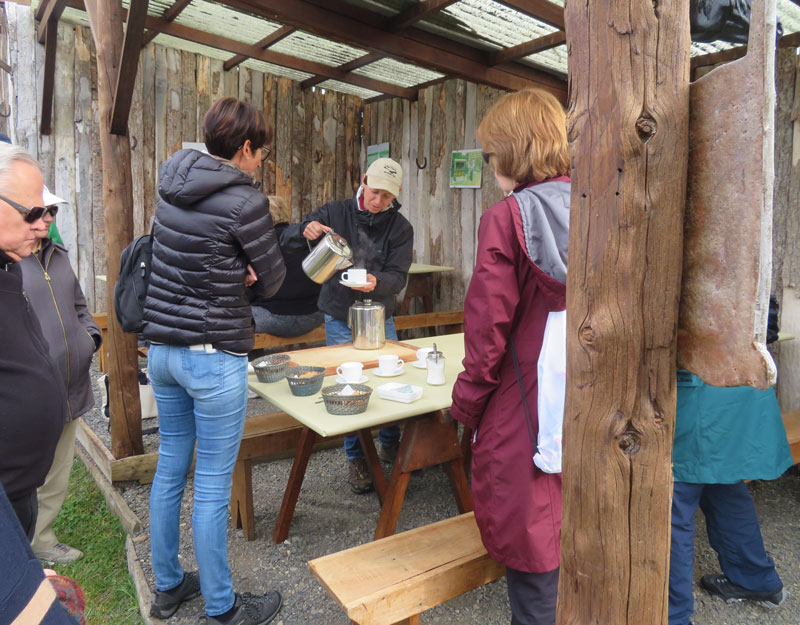
Judy grabbed a picture of me at the ranch. It was a chilly morning, as you can tell from everyone's jackets.

One of the ranch hands was preparing the lamb for barbecue. The lamb carcass is mounted on an iron frame to hold it open. He's applying some salt right now.

This is their traditional barbecue over an open fire.
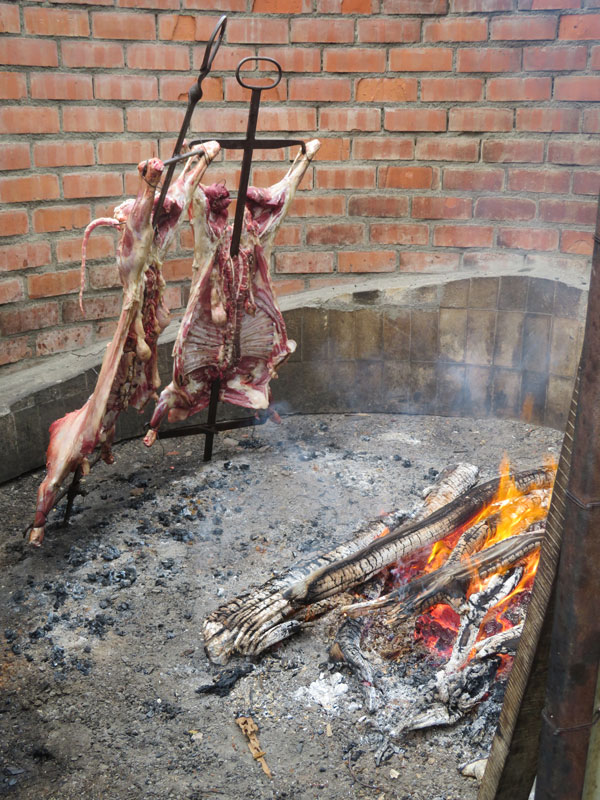
While it was barbecuing we went to a pasture to see a demonstration of how a shepherd and his dog herd sheep. This is the owner, Yvonne, talking to us, while the shepherd and his dog wait. You can only see a bit of the dog behind Yvonne.

A better picture of the shepherd and his dog, Glove, (because of his white feet - also called socks).
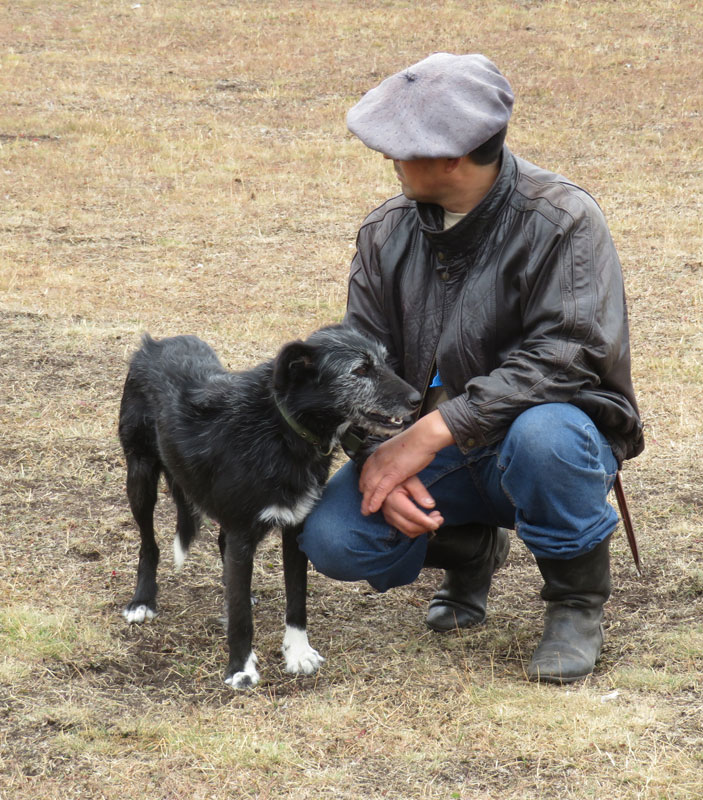
And a close-up of the dog. The dog is a mix of traditional sheep dog and a Chilean dog. He's about four years old. It takes several years to train a sheep dog.
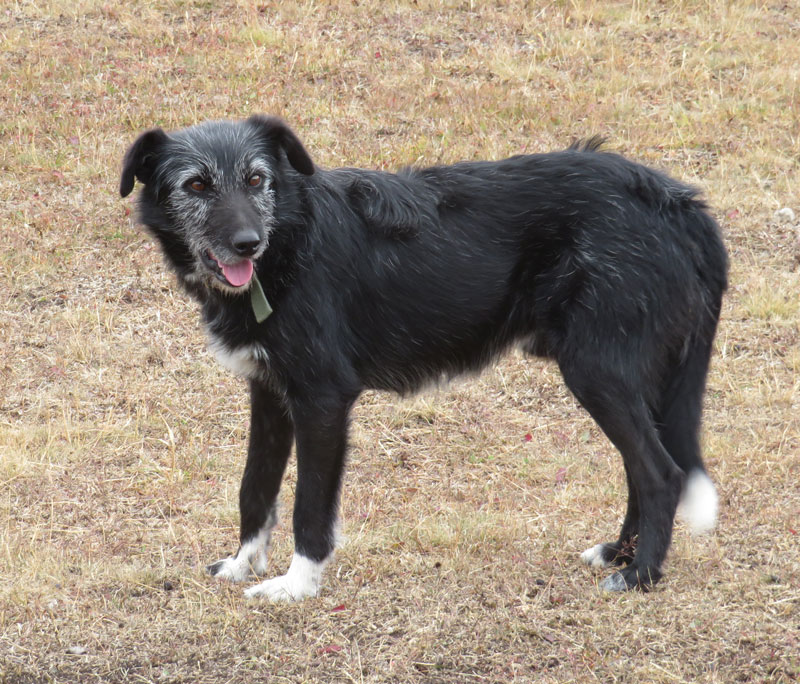
Here they are working the sheep. The sheep didn't seem afraid of the dog, but the dog was able to herd the sheep and get them to move. As soon as the sheep stopped, they began to graze.

The sheep were brought right in front of us.

Next we went to a barn for a demonstration of how sheep are sheared. They are sheared in the spring, perhaps November or December, and are sheared by professionals who go from ranch to ranch doing the shearing. The workers are paid by the number of sheep sheared, and apparently they are very quick. I think the owner said they have eight shearing stations and the workers do over 1,000 sheep a day.
Here, the shepherd is doing the shearing.
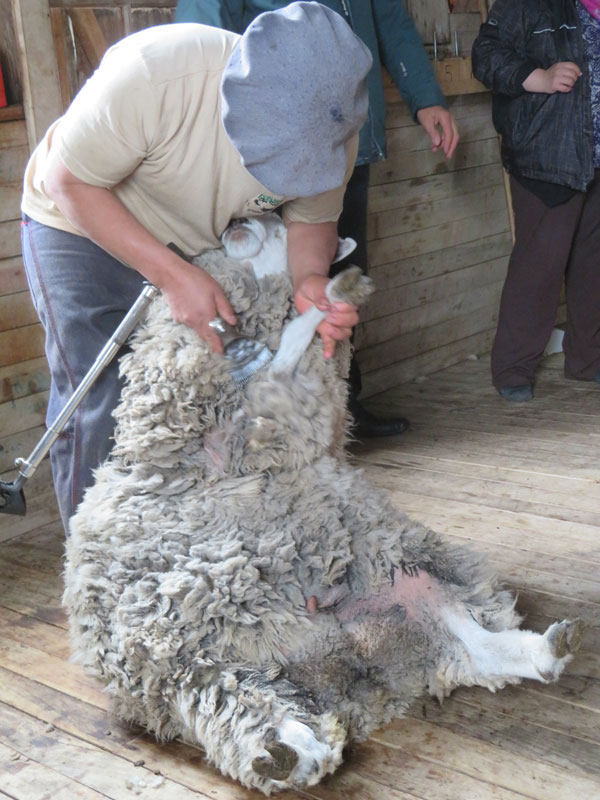
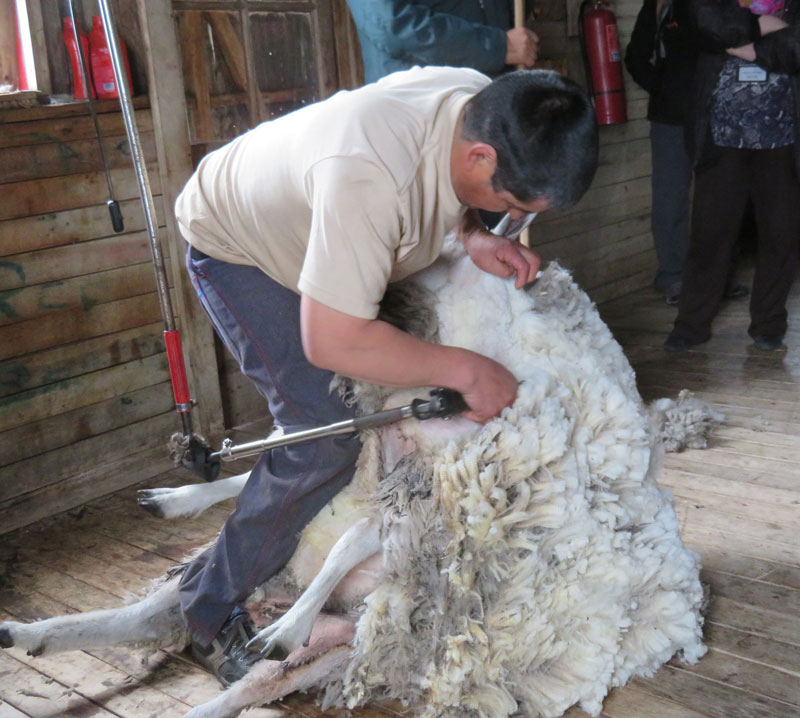


While it's somewhat sad to see the "naked" sheep, they explained that the wool continues to grow and if the sheep is not shorn it can become very uncomfortable for the sheep. The original, wild sheep would shed their wool each season (called rooing) but domestic sheep have been bred to keep their wool and not shed.
The sheared sheep are put into a pen for counting and to protect them from the elements if the weather is bad. Note the big dog with the sheep. These dogs are related to Bernese Mountain dogs, and they live with the sheep to protect the herd from predators, mainly pumas. Pumas are a protected species in Patagonia, so natural methods need to be used to protect the herd.


After shearing, the wool is thrown onto a wool table (outside up) where it is inspected and cleaned of obvious dirt and other issues. With a skilled shearer, the wool lands on the table in one piece, just as it came off the animal. It is then graded and placed in a bin with like-graded fleece. The fibers are measured to determine their micron category, and the finest is the most desirable. The table top is slatted to allow dirt to fall through.

Graded fleece is then put into a press and formed into a bale, similar to the way cotton is baled, for ease of handling and transport. You can see some plastic at the top of the press. The bale is wrapped in plastic to keep the wool clean and dry during transport.
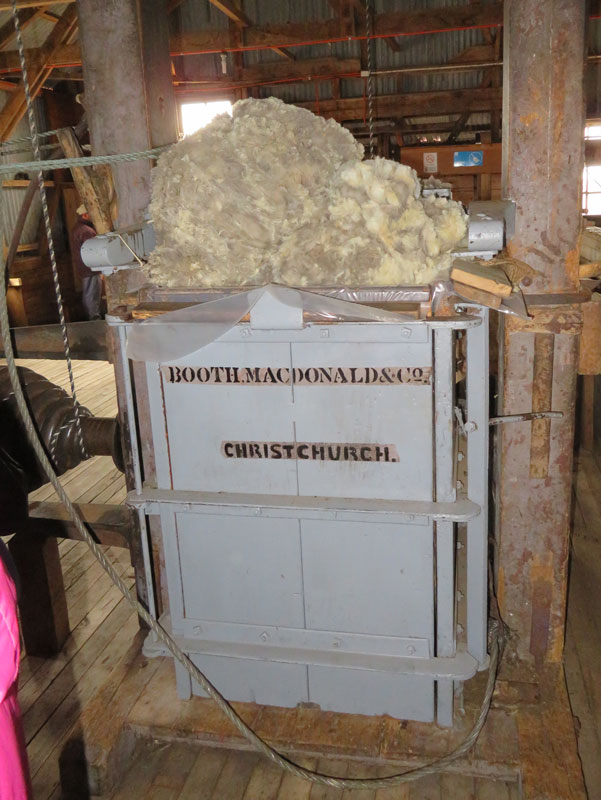
We were then taken to the horse barn to see some of the show horses they keep on the ranch. Standing with the horse is the owner of the ranch (the woman in the earlier picture is his wife). These are a special breed of Chilean horse that is bred for its skill in herding and managing cattle.

Then it was to a lunch of empanadas, barbecued lamb and boiled potatoes. The empanadas were especially good, with a flaky, crispy crust and a tasty filling.


The proud cook who made the empanadas. She has worked at the ranch for many years.

Our trip back to the ship was uneventful.
Here I am on the tender going back to the ship.
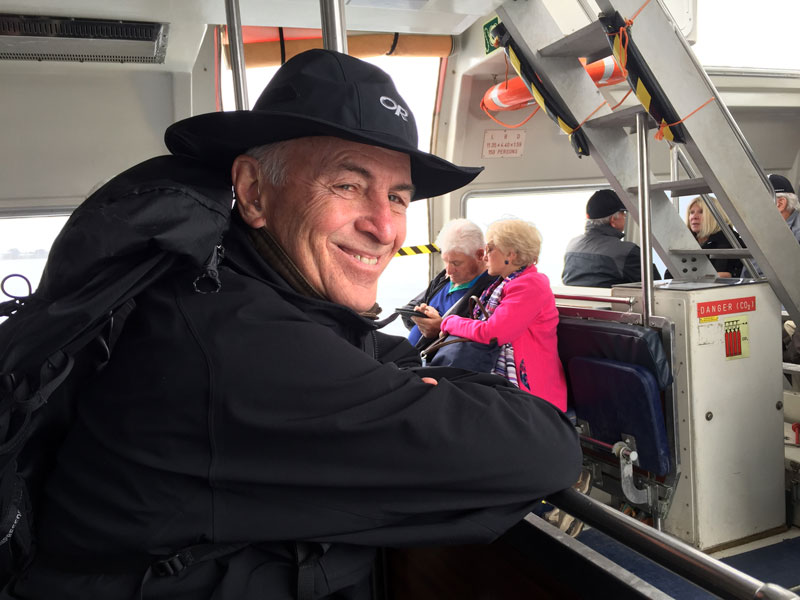
We set sail for Ushuaia.